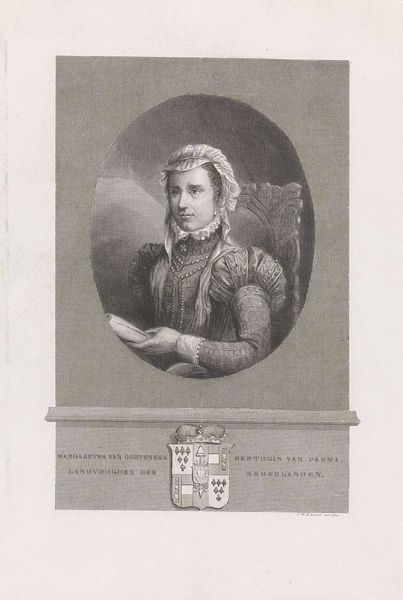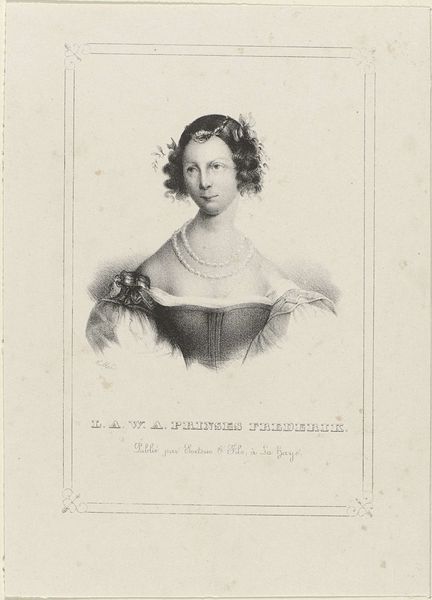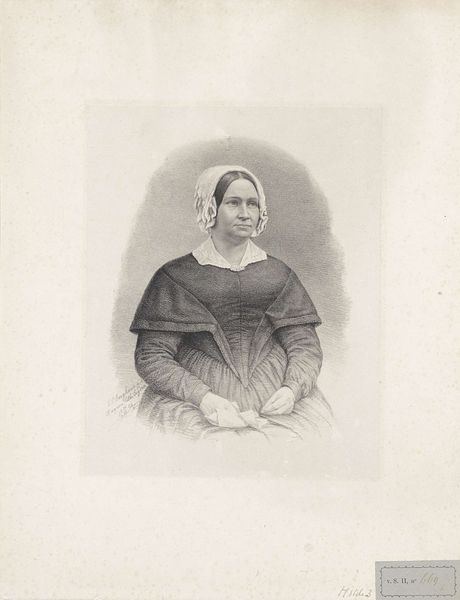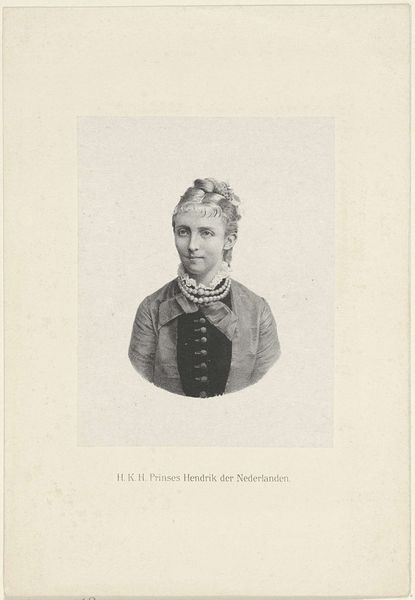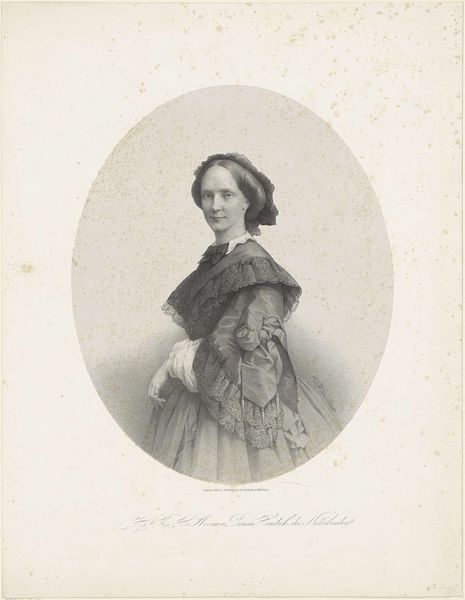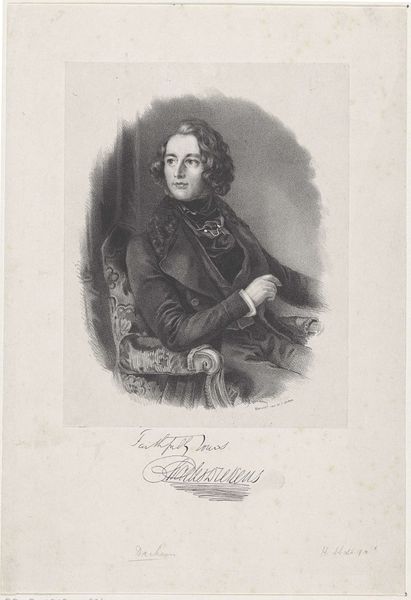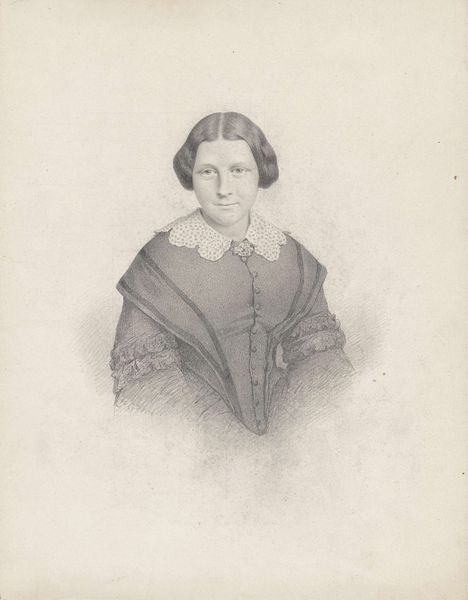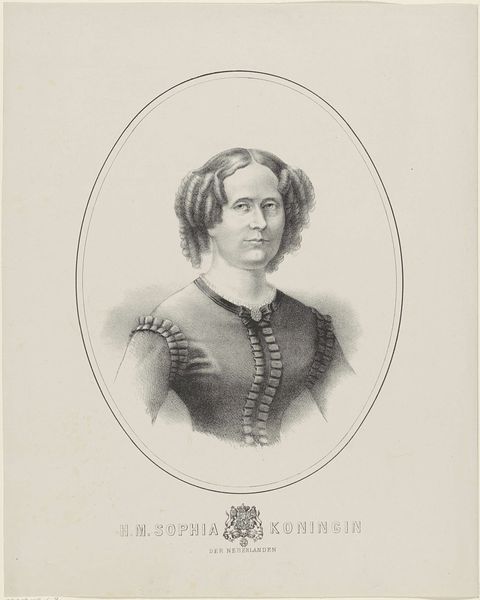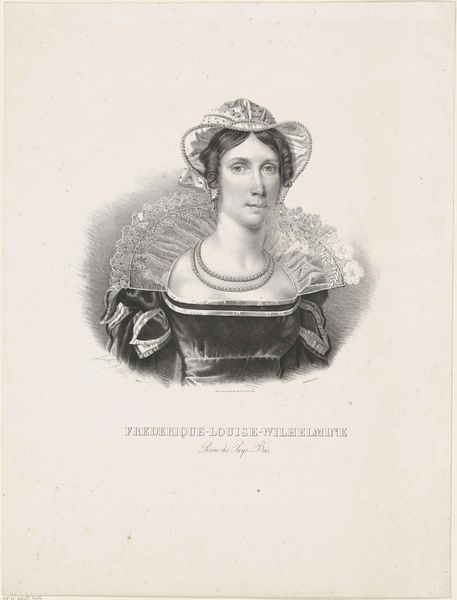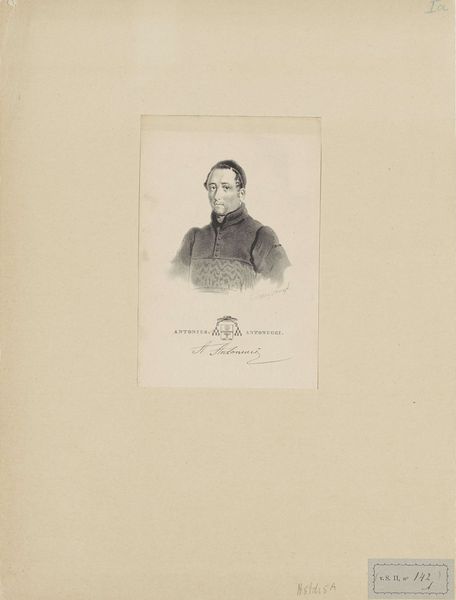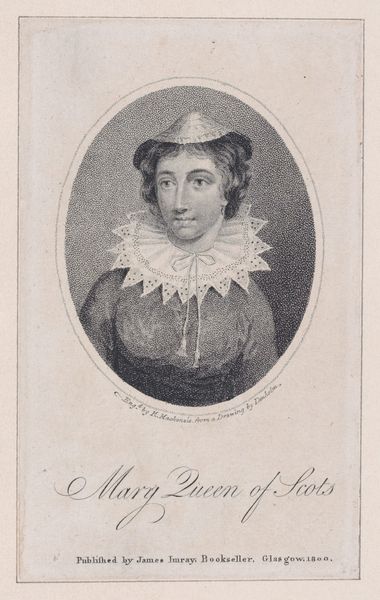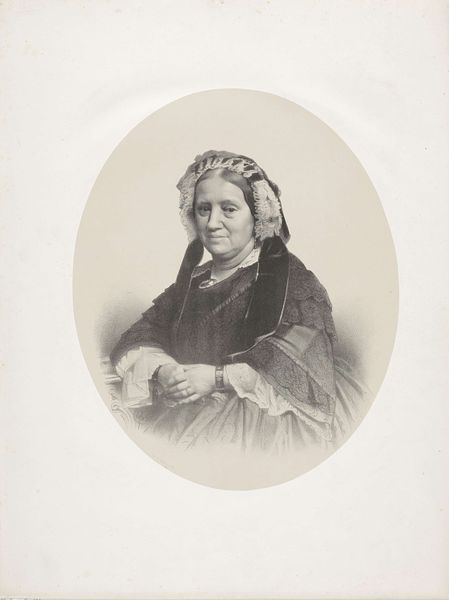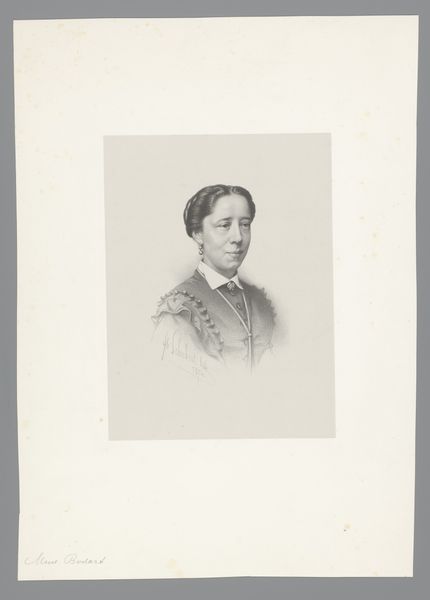
#
portrait
# print
#
romanticism
#
history-painting
Dimensions: height 222 mm, width 157 mm
Copyright: Rijks Museum: Open Domain
Curator: Here we have an early 19th-century print of Charlotte van Bourbon, likely dating between 1834 and 1840. It is an anonymous piece currently residing here at the Rijksmuseum. Editor: The first thing that strikes me is the meticulous detail in the ruff and headdress, contrasting against the relative plainness of her face and expression. Curator: Indeed, such features of attire were highly symbolic, speaking to status, piety, and the general moral tenor the Bourbon line aspired to. Charlotte’s story is of significant political and social consequence. Editor: From a compositional standpoint, the artist has skillfully employed a restricted palette—basically just blacks and grays—to define volume and texture. See how the soft gradations suggest both the light falling across her face and the almost palpable texture of that enormous collar. Curator: She was a key figure in the history of the Reformation, defying her own royal family by converting to Protestantism. Prints like these democratized access to her image, casting her as both a rebellious figure and a symbol of reformed piety. Editor: The framing, a delicate series of interwoven lines, subtly contains the image without overpowering the subject matter itself. It’s interesting to note how much emphasis the artist places on the details of fabric. Curator: The choice to portray Charlotte in this relatively austere manner emphasizes her piety and intellectual conviction. While this Romantic print idealizes her image to serve as a Protestant emblem, it’s important to recall that Bourbon family politics heavily shaped religious narratives of the day. Editor: Considering the limitations of printmaking at this time, there is a surprising amount of subtle gradations in the shadows—especially along her jawline and around her eyes, which lend a degree of psychological depth despite the print's conventional style. Curator: Studying portraits such as this through a modern lens highlights both how the perception of women’s roles has shifted dramatically over centuries and the ways image politics remain an ever-present consideration when we analyze historical artifacts. Editor: Yes, looking closer at her eyes again, one finds an almost unnerving directness there… A nice discovery while pondering the artistic nuances today.
Comments
No comments
Be the first to comment and join the conversation on the ultimate creative platform.
